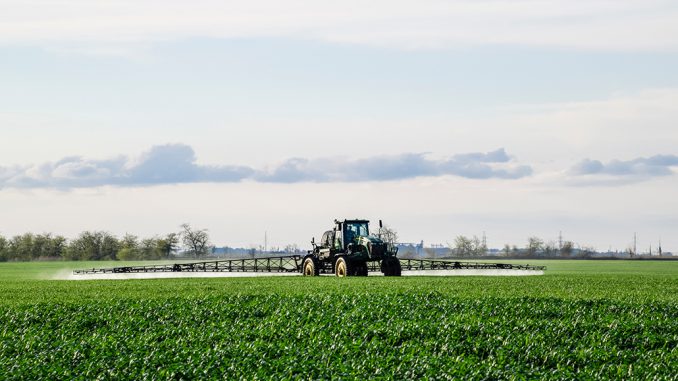Spring’17 spraying

Spring planting got off to a really rough start in much of Ontario, but most farmers in the province are (slowly) working towards finishing #plant17, and working on other spring jobs such as spraying liquid fertilizers or pesticides on their fields.
How late did planting really go this year? Many farmers had to balance planting their fields and spraying the fields they planted on time.
First on the agenda for spraying this spring is applying any liquid fertilizers to the winter wheat crops that were planted last fall. Much like you and I need our vitamins to keep us healthy, grains need prescription fertilizers to keep healthy.
Next, farmers will look at protecting their crops from threat outbreaks like weeds, insects or diseases in the fields. Wheat will need to be sprayed if it has strong symptoms of a disease outbreak. Cool and wet conditions are a breeding ground for fungal and bacteria spores. Many farmers are now working hard to spray fungicides onto their wheat crops before fusarium and rust spores damage the crop, and make the seeds unusable for food production.
Once the barley, corn, oats, and soybeans have been planted across the province, farmers will diligently monitor the fields as the crops grow. They are checking to see if there are pests that arrive in the fields to cause harm to the growing plants. Baby plants are very susceptible to even the smallest threat of a pest, whether that’s an insect a disease or even competition from neighbouring weeds. Farmers must be diligent during this growing period to monitor the smallest threat and determine if a spray is necessary. They will only spray if there is a large threat that will cause significant damage to the growing crop, as pesticides are expensive and could harm the crop if not applied correctly.
It’s a very busy time of the year for many farming families. Spring marks the beginning of the growing season where they diligently work on growing healthy grains that can be used to feed families across the world.
